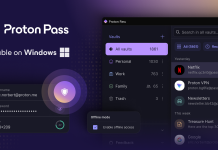
At the keynote for Google IO this morning a new initiative announced was Google Play Education. The new initiative seems to be aimed at introducing Google products and services to educational institutions. Google has already integrated into educational institutions who are currently using the Google Apps for Education service and looks to further this integration by offering tablets as well as apps.
Google appears eager to offer an easy solution by offering to use existing purchase mechanisms that schools and educational institutions are used to such as purchase orders to facilitate payment for bulk orders of apps. For interested institutions, Google is offering a signup page which offers to get back to interested parties with further information. There is a heavy push for tablets, with one of the questions being ‘I am interested in tablets for:’.
Google Play Education will allow app developers to sort their apps by curriculum, grade, and standard and using Google’s eco-system deliver apps over the air to tablet devices. Google will also make it easy for your app to be discovered if it meets the criteria that educators are looking for. But, it’s not as easy as signing up with your existing app, Google is ensuring that only quality apps are offered, they must adhere to the Android Design Guidelines as well as for tablet apps they must meet the tablet app quality guidelines and they must ‘Strive for simplicity and highest usability for students’.
Google is also about making the apps safe for students to use, advising they must be usable and appropriate for the K-12 market. They have offered four guidelines that must be adhered to :
- Apps and the ads they contain must not collect personally identifiable information other than user credentials or data required to operate and improve the app.
- Apps must not use student data for purposes unrelated to its educational function.
- Apps must have a content rating of “Everyone” or “Low Maturity” (apps with a “Medium Maturity” rating are allowed, if they have that rating solely because they allow communication between students).
- App content, including ads displayed by the app, must be consistent with the app’s maturity rating. The app must not display any “offensive” content, as described in the Google Play Developer Program Policies and content-rating guidelines.
To ensure that all this is above board, developers must submit apps for review to a board of educators who will ensure they meet the Common Core Standards.
Google is also recommending that in-app purchases and advertising should be switched off within apps. A trial period is also required so that Teachers can evaluate applications prior to purchase – no 15 minute refund window here.
Google has a lot of ground to make up with regards to educational institutions using tablets in schools, with many already using iOS products. With a cheaper option in their Nexus line as well as a push towards apps that meet a minimum standard of quality it will be interesting to see exactly how far Google can reach into a possibly very lucrative market.




Until Android can traverse a network with an authenticated proxy, it has a limited appeal in the education market. A lot of schools are yet to move to the newer generation transparent proxy/filter solutions, as they aren’t exactly cheap.
If you watched the video and think of the millions of classrooms worldwide.. words cannot describe how big a market this is.
When you see that you can progress from demo for a teacher, to rolling out a demo for kids, to purchasing for one class, to purchasing for entire year, to the entire school with only a few mouse clicks.. wow. $$$$$$…